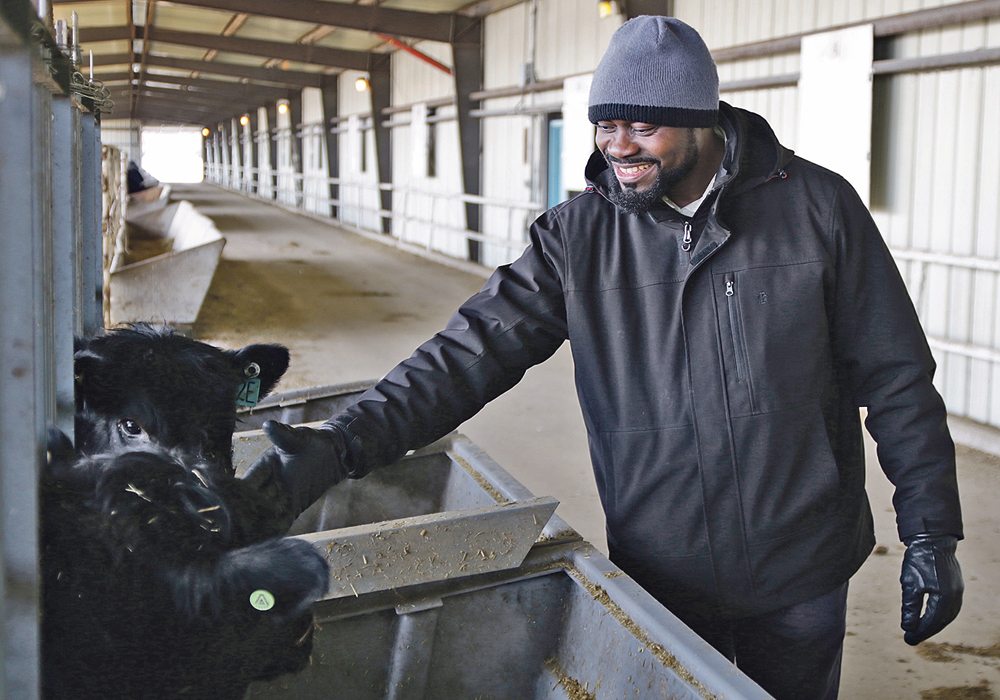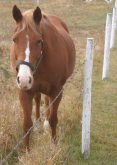A lab test would make it easy for northern Alta. ranchers to see which animals give them more bang for their buck
Vermilion, Alta. — Ranchers in northeastern Alberta and northwestern Saskatchewan may find new ways to reduce feed costs, thanks to new research in the region.
The research, partly spearheaded by Obioha Durunna of Lakeland College, aims to figure out which particular cattle in his trial herd get the best gains for the amount of feed they consume.
“It’s all from a competitiveness standpoint and a profitability standpoint because we have to find ways to increase the bottom line for producers,” said Durunna, who is working on several projects.
Read Also

Beef check-off collection system aligns across the country
A single and aligned check-off collection system based on where producers live makes the system equal said Chad Ross, Saskatchewan Cattle Association chair.
In one of those, Durunna hopes to figure out if there is a relationship between rumen temperature and feed efficiency. At research trials in Lanigan, Sask., it appears that higher rumen temperatures indicate less efficient animals, while lower temperatures mean they are more efficient.
Durunna hopes for clearer results from the Lanigan project in June. If researchers come up with data they are more confident in, they hope to use genetic tools to determine which cattle genes provide the best traits for feed efficiency, reproduction and temperament. They already have genetic profiles for each of their trial animals.
Enjoyed my time at @LakelandCollege last week. I spoke with Obi Durunna, the new livestock researcher. He’s been tasked with figuring out how to reduce feed costs, and has a number of projects underway.#westcdnag pic.twitter.com/EiNcfOuSgZ
— Jeremy Simes (@JeremySimes) April 4, 2018
Once they have that data, Durunna said it could eventually be easy for ranchers to send in hair or blood samples of their calves to a research lab. Technicians would test those samples and be able to indicate whether an animal is feed efficient or not.
“One important part of using these genomic tools is to profile these animals at a young age,” he said. “We don’t want producers to incur costs when feeding animals, where we realize after feeding them for a year it might be something you don’t want to keep. So, this would help us get information on the animals at a young age and therefore save producers on costs.”
In another trial taking place at the feed bunks on campus, Durunna is using wireless detection technology to measure how much each calf is eating every second. He then weighs the animals every two weeks and after 70 days he’ll have a good idea on which ones are getting good gains for the amount of feed they eat, as well as ones that are inefficient.
“If you can cut down and identify the animals that eat less to give you the same level of production or performance as others, why wouldn’t you want to keep such animals?” he said.
Feed efficiency research like this has long been needed in the region, which has lots of cow-calf producers and purebred breeders, said Josie Van Lent, dean of agriculture sciences at Lakeland College.
She said Lakeland has always been carrying out research, but the college wanted to build it up. She said it’s important that producers in the region remain competitive despite facing higher feed costs due to the area’s long winters.
“(Durunna’s) work will be huge for this area,” she said. “One of the things I appreciate is that he will talk to producers, ranchers and farmers to find out what their issues are and base his research on that. He’s going to spend time to get to know producers and fill that gap.”
Durunna hopes to eventually conduct similar studies on pastureland.
“Right now, it’s hard to measure feed intake on pasture. But if we have a tool that would help us profile these animals on pasture without having to get them in a confined setting, that would be a great win for producers because each time you bring the animals into a confined setting, the costs go up.”


















